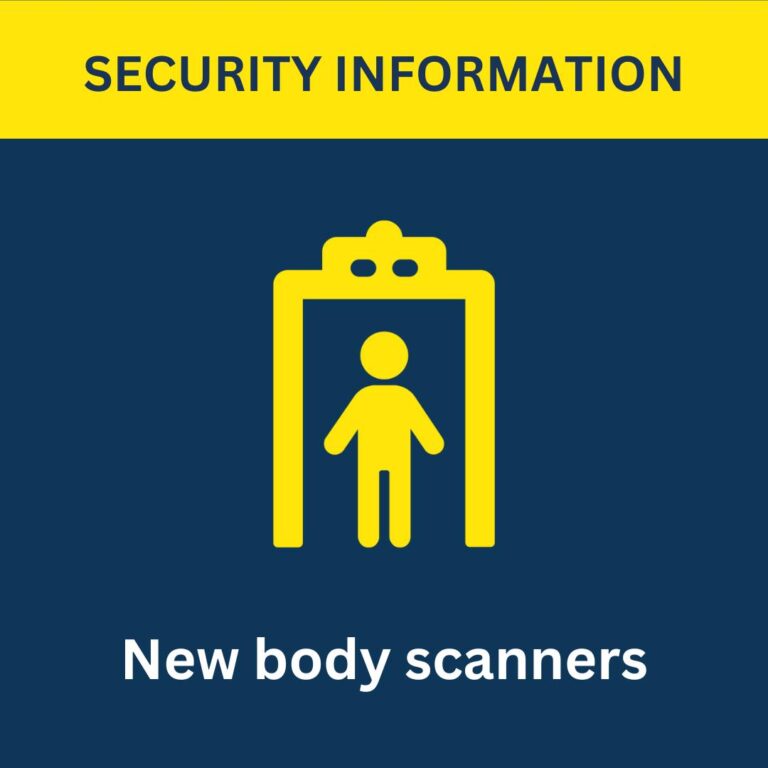Four new body scanners are being installed at Jersey Airport as part of the ongoing upgrade of the security process. This is part of a £3m (US$3.8m) project to improve customer facilities and security technology in line with new rules on screening. UK airports have until June 2024 to upgrade their equipment and processes which will enable current rules regarding taking items out of bags for separate screening to be eased.
Work to install new airport security equipment at Jersey Airport began earlier this year to meet the requirements of the new system. Since then, three new x-ray machines have been installed, which are now in use.
Head of security Maria Le Tiec said, “We are now installing four body scanners to complete the new security system which will be required of most UK airports from June next year. Two of the new scanners will be in operation from November 23, and the remaining two will follow.”
Le Tiec said the new body scanners are completely safe and provide an additional layer of security. They use millimeter wave imaging to locate objects on a person that are concealed under clothing. The technology works by bouncing millimeter waves off an individual’s skin to produce an outline image of the person’s body, showing any concealed, potentially dangerous objects. Airport security staff see a generic human shape, without any identifying features. The generic human shape is the same for every traveler going through an airport scanner.
Images are analyzed digitally within the equipment, so the millimeter wave image of the passenger is never seen, stored, printed or transmitted. The scanner is programmed so that no image can be retained, printed or transmitted.
Anyone who does not wish to be screened by a security scanner will undergo a pat-down manual search instead, which will take longer than walking through the scanner. Travelers shorter than 1m and taller than 2m may also be required to undergo pat-down searches.

